Some say the path to 5G evolution is as complex as a maze.
Unlike in the past, there are up to 8 options for 5G networking architecture. Apart from Option 1, which is the 4G architecture, and Options 6 and 8, which have been abandoned by the industry, there are still Options 2, 3, 4, 5, and 7 remaining. Among these, Options 3, 4, and 7 also include different sub-options.
Today, our task is to clarify these options.
In Simple Terms
In simple terms, 5G networking includes the following options:
• Option 1: Standalone Networking (SA), which connects LTE base stations to the 4G core network, is the current 4G network architecture.
• Option 2: Standalone Networking (SA), which connects 5G NR base stations to the 5G core network.
• Option 3: Non-Standalone Networking (NSA), which connects both LTE and 5G NR base stations to the 4G core network.
• Option 4: Non-Standalone Networking (NSA), which connects both 5G NR and LTE base stations to the 5G core network.
• Option 5: Standalone Networking (SA), which connects LTE base stations to the 5G core network.
• Option 7: Non-Standalone Networking (NSA), which connects both LTE and 5G NR base stations to the 4G core network.
It reads a bit like a tongue twister, so let’s use a diagram to explain.
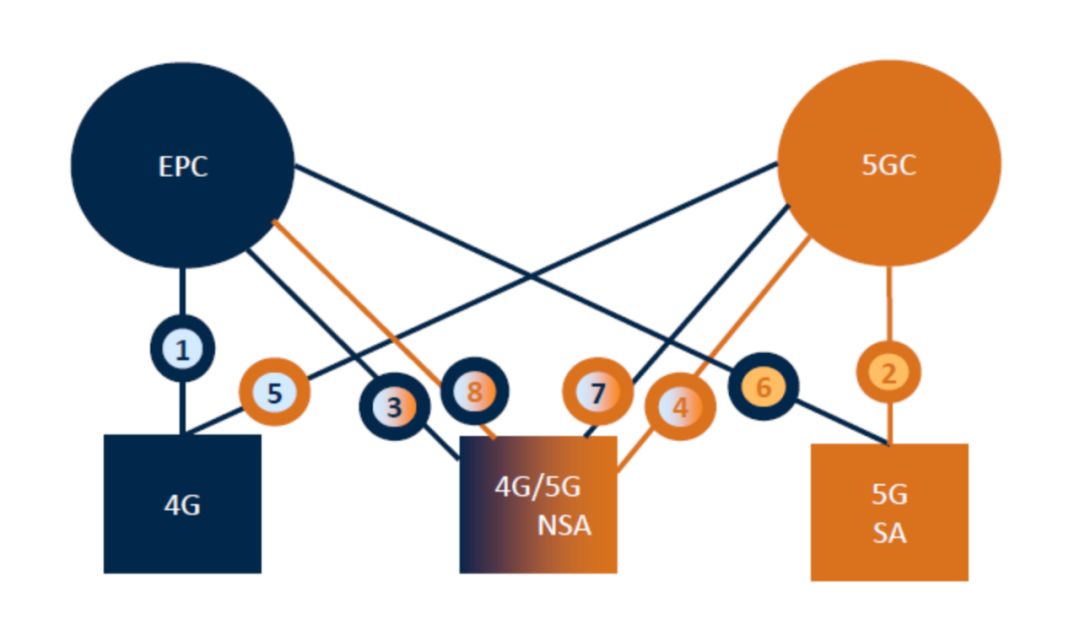
We also need to mention Dual Connectivity (DC).
The dual connectivity technology was first proposed in the 3GPP R12 version during the 4G era. Its basic principle is to allow a mobile phone to connect to two (or more) nodes (base stations) in the wireless access network, where one is the primary node responsible for the control plane of wireless access, handling signaling or control messages, while the other (or others) are auxiliary nodes solely responsible for the user plane, carrying data traffic.
Why was dual connectivity technology introduced in R12? It was mainly to improve network speed, balance network load, and avoid interruption during handovers, ensuring robust mobility.
Entering the 5G era, the principle of LTE/NR dual connectivity is basically the same as that of R12’s LTE/LTE dual connectivity, where either the LTE base station (eNB) acts as the primary node and the 5G base station (gNB) as the auxiliary node; or the 5G base station (gNB) acts as the primary node and the LTE base station (eNB) as the auxiliary node.
Having briefly introduced this, let’s specifically discuss each networking option.
Option 3 Series
The 3GPP Release 15 NSA NR standard completed in December 2017 is based on the Option 3 series.
In the Option 3 series, terminals connect simultaneously to both 5G NR and 4G LTE, with the control plane anchored in 4G, using the 4G core network.
In the control plane, the Option 3 series fully relies on the existing 4G system. However, there are differences in the anchoring points for the user plane, which is why the Option 3 series has three sub-options: 3, 3a, and 3x.
What are the differences between Options 3, 3a, and 3x?
Option 3
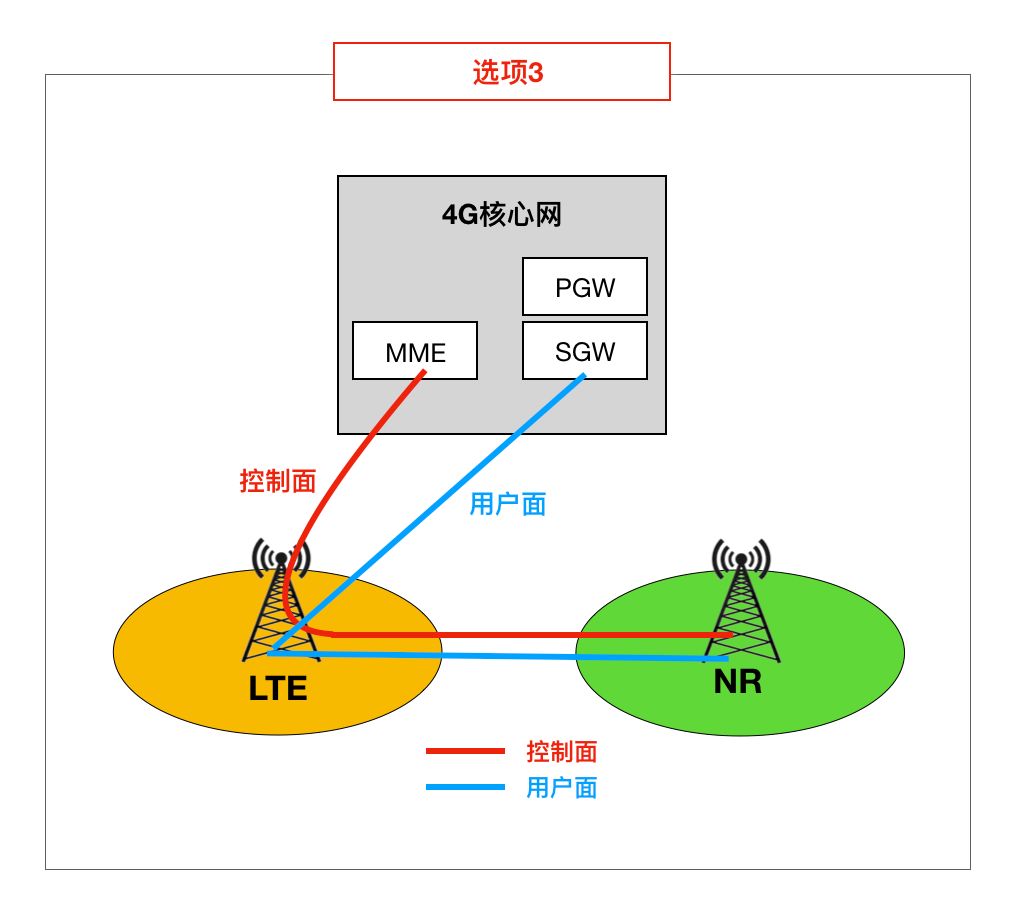
The characteristics of Option 3 are as follows:
• Both the control plane and user plane of the 5G base station are anchored at the 4G base station.
• The 5G base station does not communicate directly with the 4G core network; it connects to the 4G core network through the 4G base station.
• 4G and 5G data traffic is diverted at the 4G base station before being transmitted to mobile terminals.
• The Xx interface between the 4G base station and the 5G base station must support both the control plane and 5G data traffic, as well as traffic control, while meeting delay requirements.
Clearly, the biggest issue with the Option 3 architecture is that the 4G base station is under tremendous pressure.
Since 4G and 5G data traffic is diverted (or aggregated) at the 4G base station, it means that the 4G base station must handle both 4G and 5G traffic simultaneously. The peak rate of 5G is dozens of times that of 4G, and the original 4G base station was not designed for the high speeds of 5G, so the 4G base station will inevitably encounter processing capacity bottlenecks.
The solution is to upgrade the hardware of the 4G base station.
However, upgrading the 4G base stations costs money, and some operators may be unwilling to do so, so 3GPP introduced two additional options—Options 3a and 3x.
Option 3a
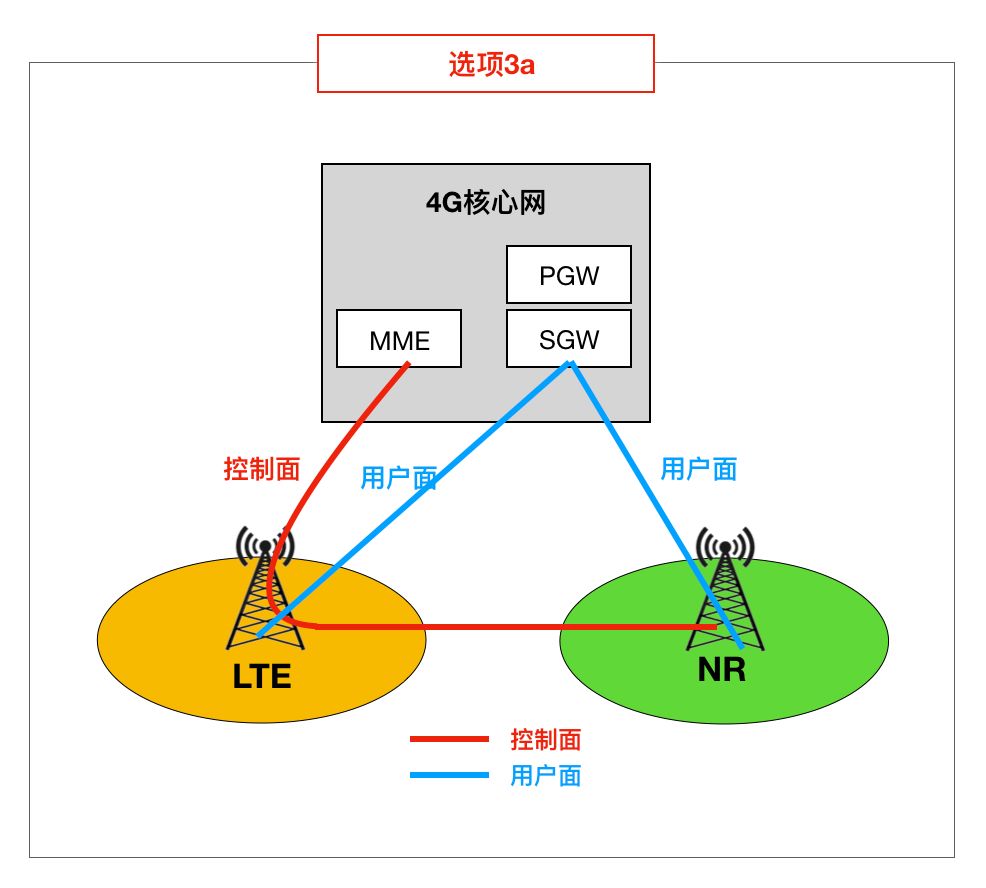
The difference between Option 3a and Option 3 is that it no longer places a heavy burden on the 4G base station; 4G and 5G data traffic no longer pass through the 4G base station for diversion and aggregation, but instead, the user planes connect directly to the 4G core network, with only the control plane anchored at the 4G base station.
While Option 3a reduces the burden on the 4G base station and does not require significant hardware upgrades, it has new drawbacks.
Firstly, in the user plane, the 4G base station and the 5G base station each connect directly to the 4G core network, and there is no X2 interface interconnection between them, meaning they will operate independently, without load sharing. For example, the 4G base station may only carry VoLTE voice traffic, while the 5G base station only carries internet traffic.
At the same time, when a mobile phone “switches” from the 5G base station to the 4G base station, the core network needs to perform an S1 (the interface between the base station and the core network) Path Switch, so there is a slight delay during the “switching”.
Option 3x
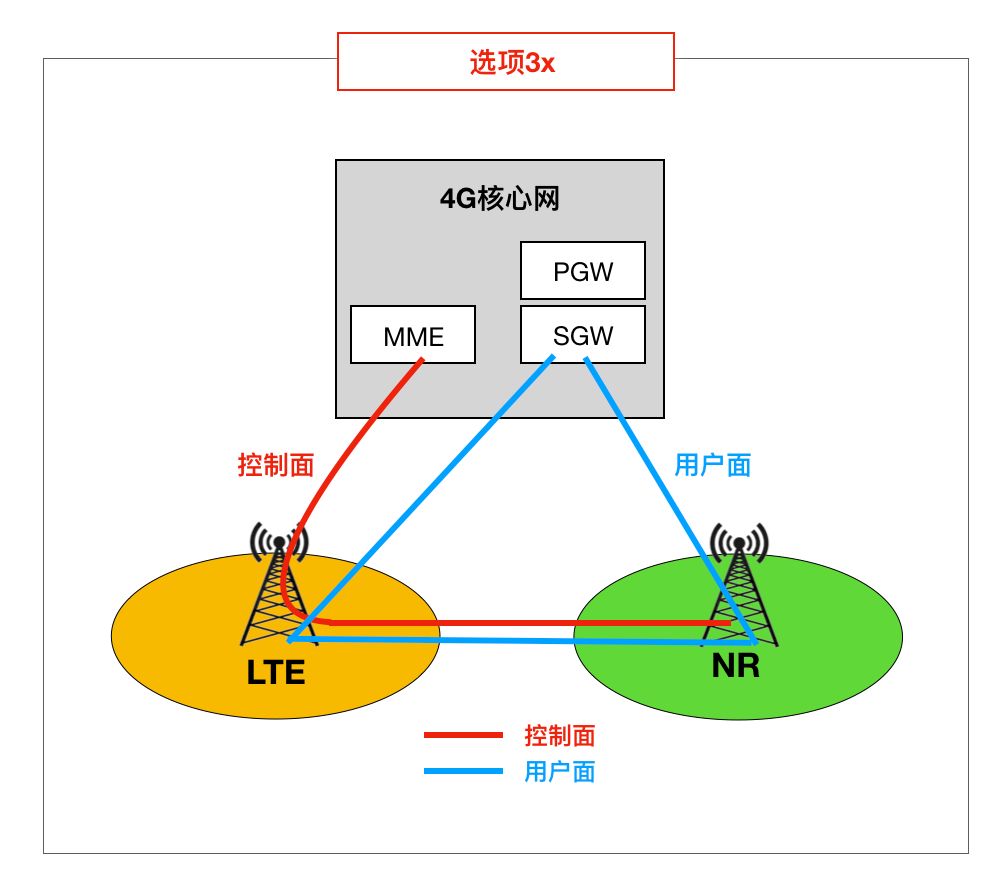
Option 3x can be seen as a combination of Options 3 and 3a.
In Option 3x, the control plane is still anchored in 4G, but in the user plane, the 5G base station connects to the 4G core network. The diversion and aggregation of user data traffic also occurs at the 5G base station, either being sent directly to the terminal or being forwarded to the 4G base station via the X2 interface before being sent to the terminal.
Option 3x architecture is future-oriented; it resolves the performance bottleneck issues of the 4G base station in the Option 3 architecture without needing to upgrade the existing 4G base station hardware, and it also resolves the issue of the 4G and 5G base stations operating independently in Option 3a.
For some low-speed data streams, such as VoLTE, they can be sent directly from the 4G core network to the 4G base station.
So far, most operators have chosen Option 3x.
Option 2
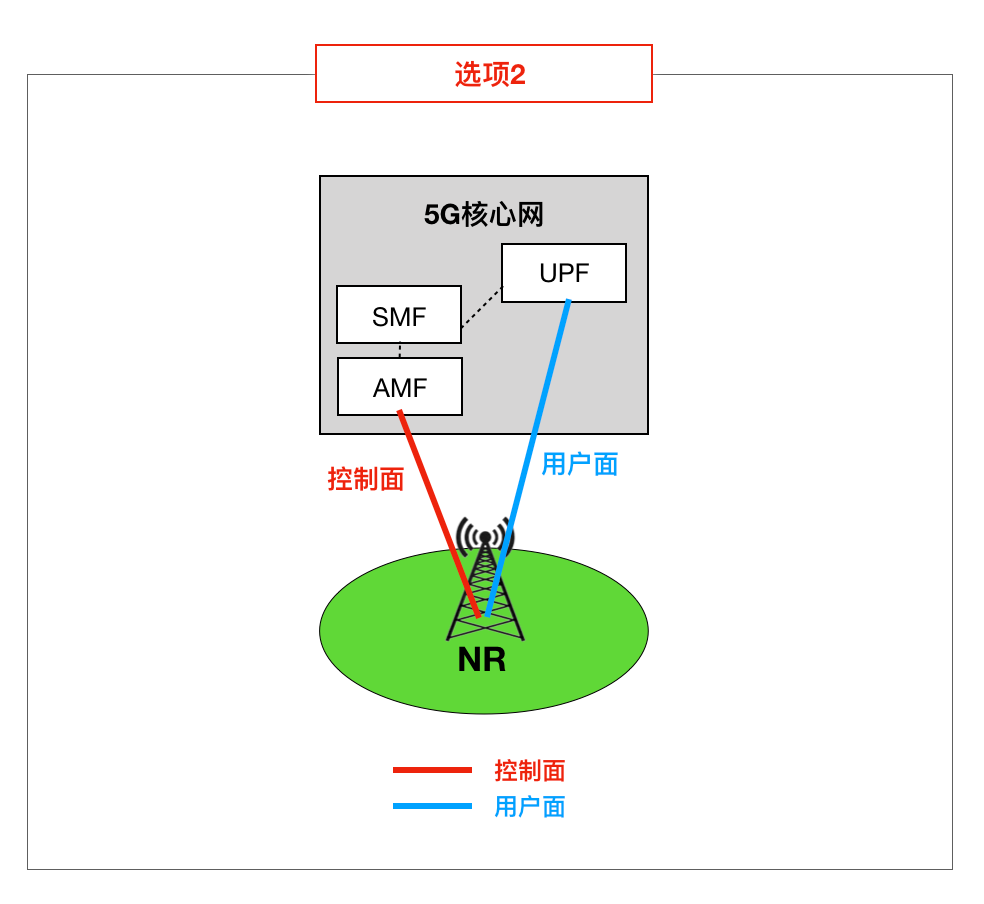
Option 2 is the independent networking of 5G base stations with the 5G core network, moving into the 5G era by packaging both the 5G core network and access network together.
In non-standalone networking, the interconnectivity between 5G and 4G at the access network level is more complex. However, in the independent networking of Option 2, the 5G network is independent of the 4G network, and 5G and 4G only interconnect at the core network level, simplifying interconnectivity.
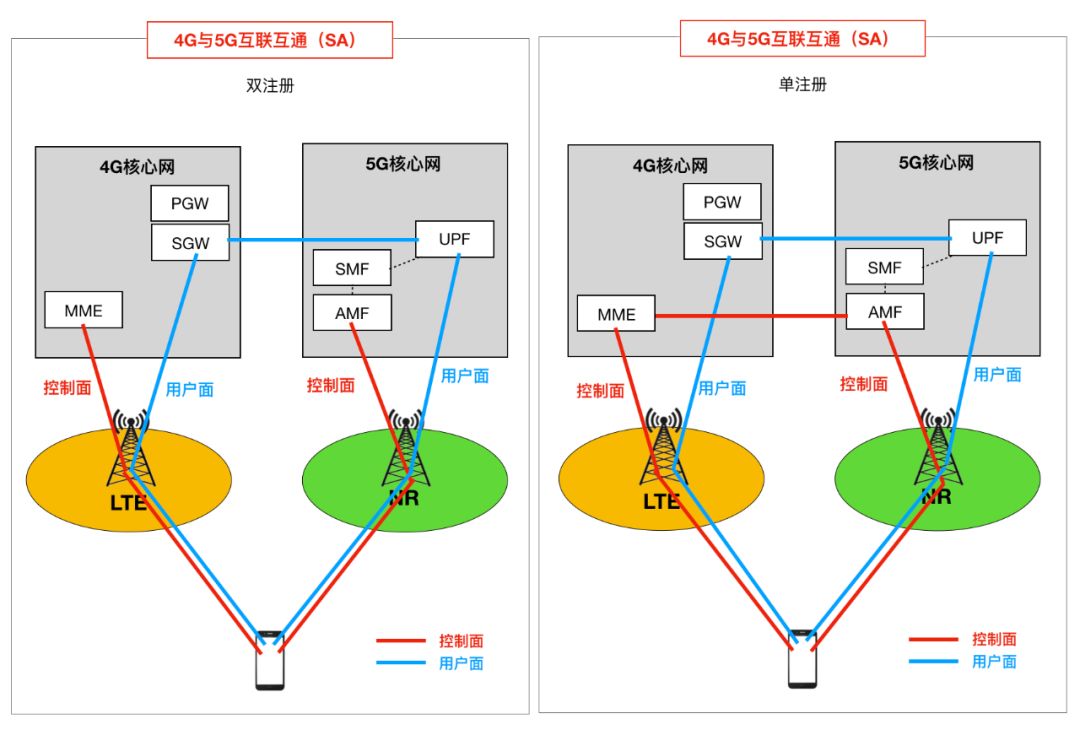
▲ In the architecture of Option 2, the 4G network and 5G network interconnect at the core network level
However, the problem is that unlike the Option 3 series, which relies on the mature network and ecological scale advantages of 4G, once operators choose to start building networks with Option 2, it means they need to invest heavily in constructing an independent 5G network. Given the current situation where new 5G use cases have not yet exploded, this requires operators to balance their investments in protecting 4G assets and building 5G networks.
Option 7 Series
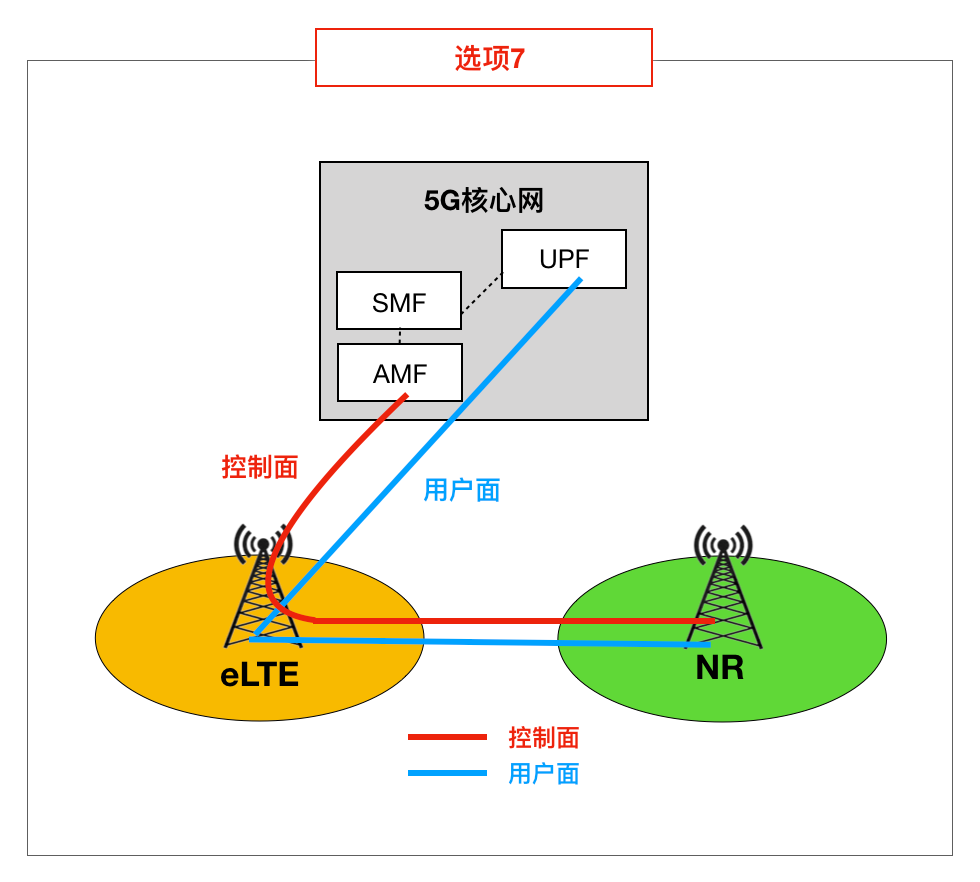
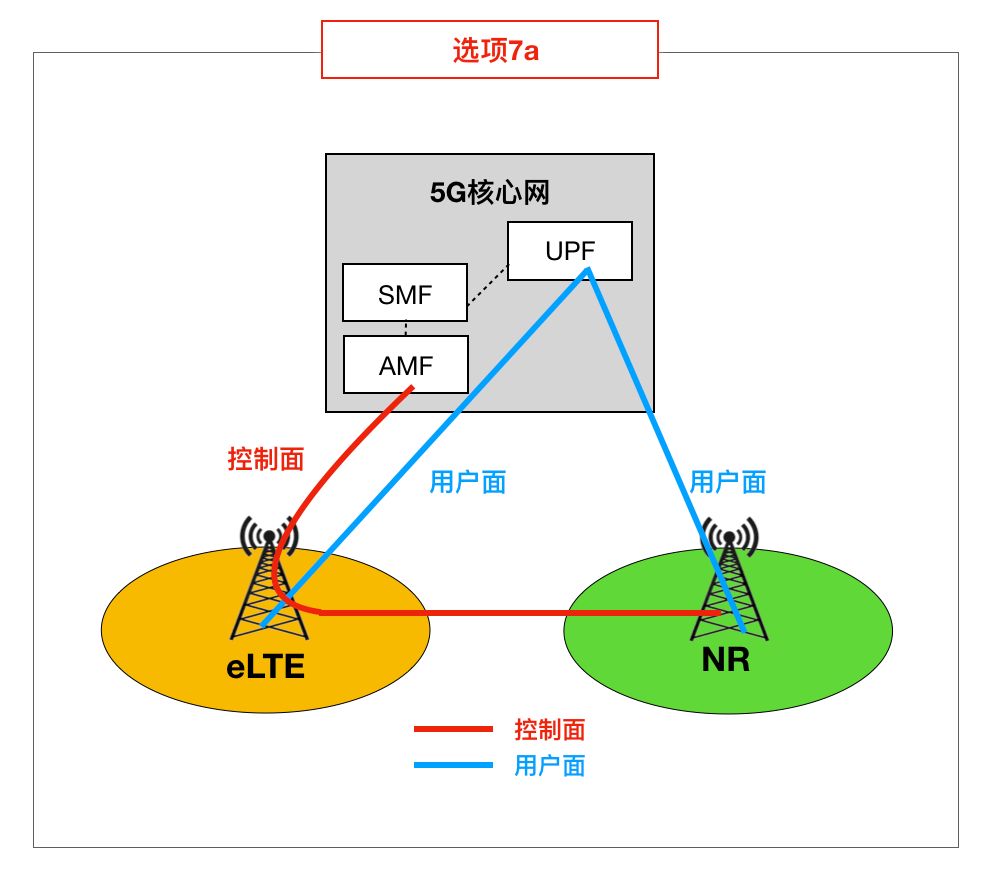
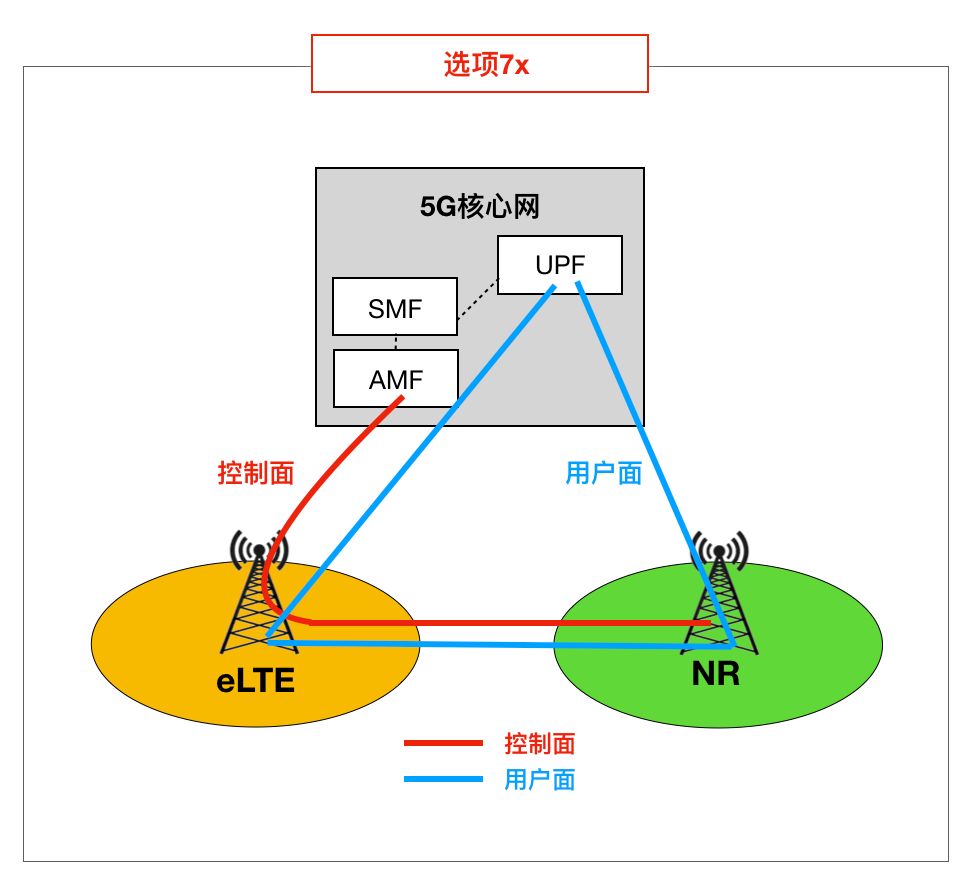
The Option 7 series includes three sub-options: 7, 7a, and 7x, similar to Option 3, and can be seen as an upgraded version of the Option 3 series. The difference is that the Option 3 series connects to the 4G core network, while the Option 7 series connects to the 5G core network, migrating both NR and LTE to the new 5G core network.
Option 4 Series
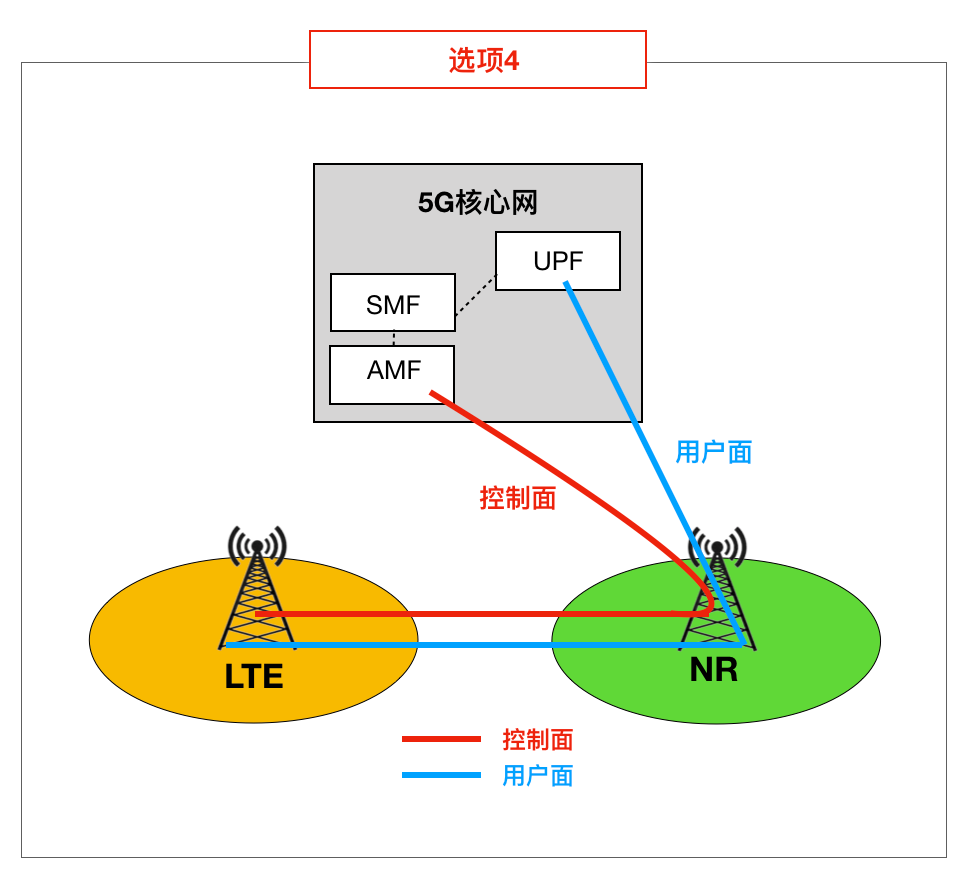
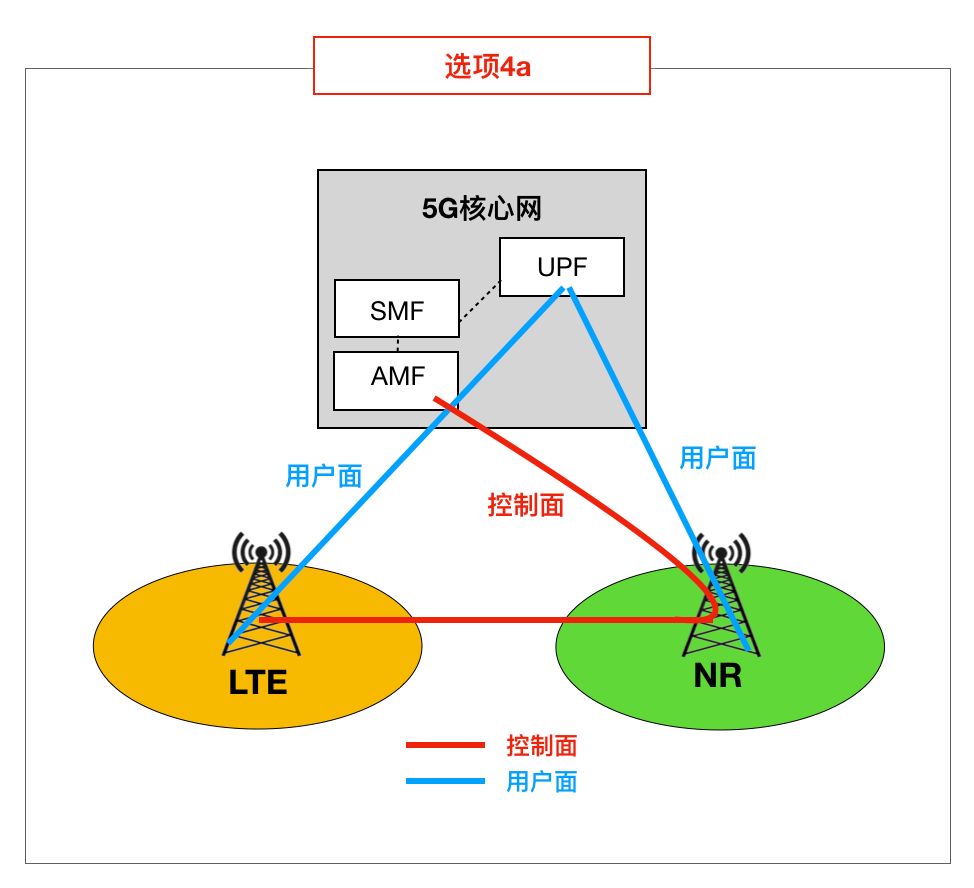
The Option 4 series includes two sub-options: 4 and 4a. Under the Option 4 series, both 4G and 5G base stations share the 5G core network, with the 5G base station as the primary station and the 4G base station as the secondary station.
The Option 4 series requires a fully covered 5G network, so operators deploying 5G in frequency bands below 1GHz prefer this deployment method.
Option 5
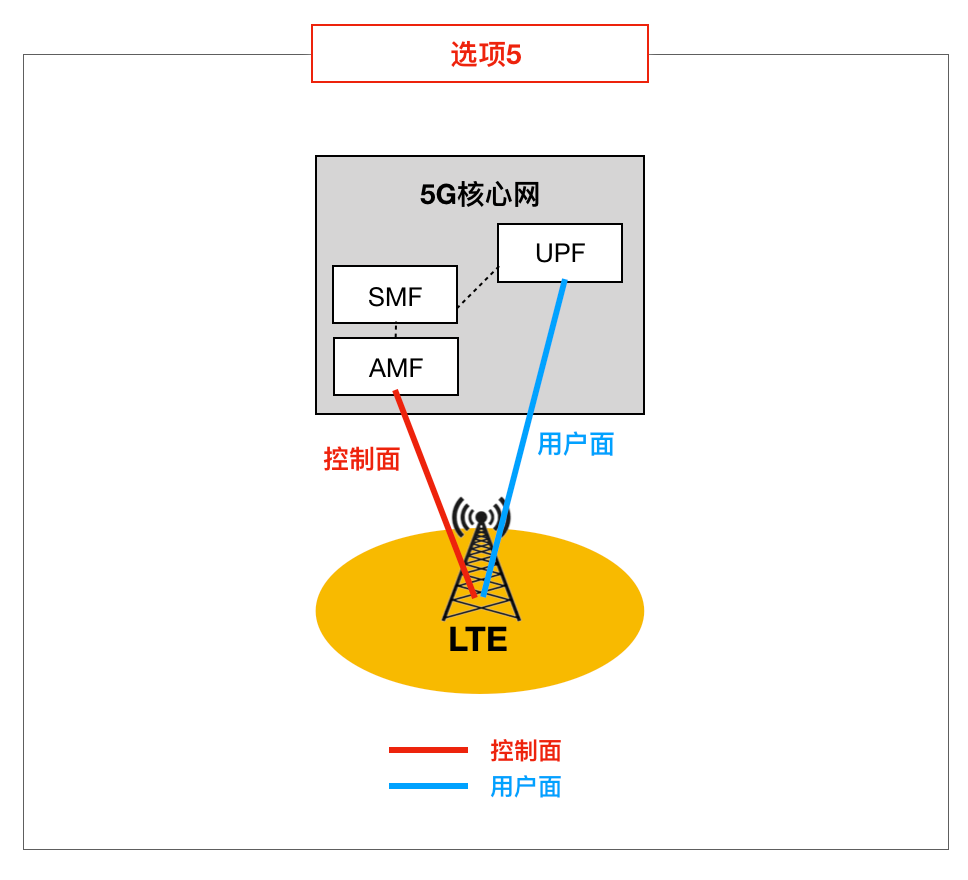
Option 5 connects 4G base stations to the 5G core network, similar to Option 7, but without dual connectivity with NR.
Operators choosing Option 5 place great importance on the cloud-native capabilities of the 5G core network. For example, the UK operator Three plans to migrate its 4G core network to the 5G core network ahead of schedule to help some enterprise private networks access its 5G core network early, providing them with flexible network slicing services and hoping to offer cloud gaming services to consumers as soon as possible.
Network optimization mercenaries submission email: [email protected]
Long press the QR code to follow

On the road of communication, let’s walk together!